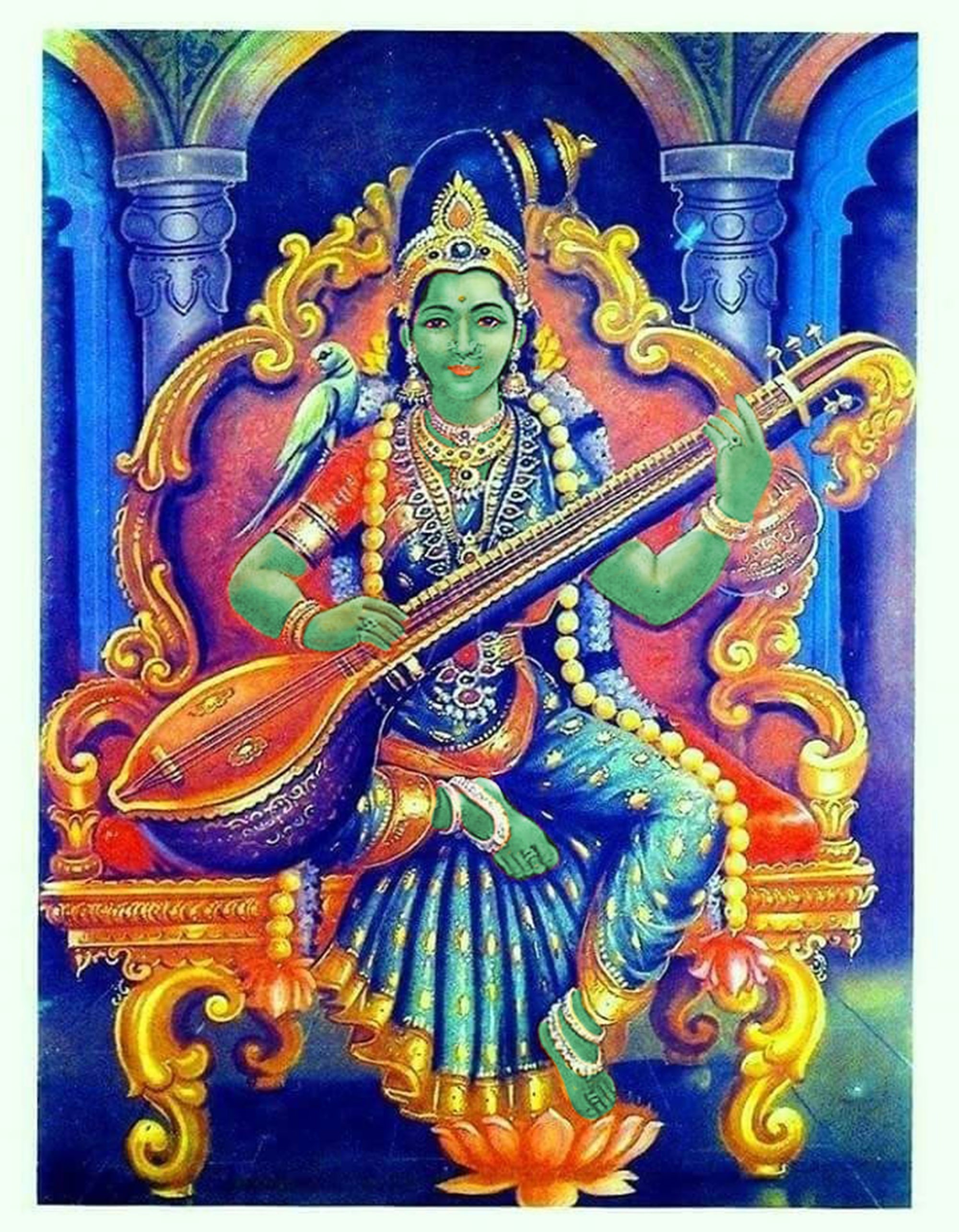- Edited

हयग्रीव उवाच
तां तुष्टुवुः षोडशभिर्नामभिर्नाकवासिनः
तानि षोडशनामानि श्ड़्णु कुम्भसमुद्भव [ १ ]
सङ्गीतयोगिनी श्यामा श्यामला मन्त्रनायिका
मन्त्रिणी सचिवेशी च प्रधानेशी शुकप्रिया [ २ ]
वीणावती वैणिकी च मुद्रिणी प्रियकप्रिया
नीपप्रिया कदम्बेशी कदम्बवनवासिनी [ ३ ]
सदामदा च नामानि षोडशैतानि कुंभज
एतैर्यः सचिवेशानीं सक्ड़्त् स्तौति शरीरवान्
तस्य त्रैलोक्यमखिलं हस्ते तिष्ठत्यसंशयम् [ ४ ]
इति श्री ब्रह्माण्डपुराणे ललितोपाख्याने श्रीश्यामला षोडशनाम स्तोत्रम् ।
hayagrīva uvāca
tāṁ tuṣṭuvuḥ ṣōḍaśabhirnāmabhirnākavāsinaḥ
tāni ṣōḍaśanāmāni śṛṇu kumbhasamudbhava [ 1 ]
saṅgītayōginī śyāmā śyāmalā mantranāyikā
mantriṇī sacivēśī ca pradhānēśī śukapriyā [ 2 ]
vīṇāvatī vaiṇikī ca mudriṇī priyakapriyā
nīpapriyā kadambēśī kadambavanavāsinī [ 3 ]
sadāmadā ca nāmāni ṣōḍaśaitāni kuṁbhaja
ētairyaḥ sacivēśānīṁ sakṛt stauti śarīravān
tasya trailōkyamakhilaṁ hastē tiṣṭhatyasaṁśayam [ 4 ]
iti śrī brahmāṇḍapurāṇē lalitōpākhyānē śrīśyāmalā ṣōḍaśanāma stōtram |
Source: https://stotranidhi.com/en/sri-shyamala-shodashanama-stotram-in-english/
The meaning of the 16 Names:
from “Thoughts on the Way” by Yogamba Sameta Atmanandanatha
Saṅgītayoginī: sangīta is “music”, yoga is “union.” As such, Rājaśyāmalā is the one who shows the way to unite with the Divine through music.
Śyāmā: Dark hued. Devī is meditated as having a dark green hue.
Śyāmalā: Here we are directed to meditate on Devī being present in all the dark hued objects in this world, like rain bearing clouds, etc.
Mantranāyikā: The word mantra means that which transports the person into a realm of a mindless state. Nayikā means a “Queen.” As such, She’s the Queen of Mantras and is skilful in getting a person into that mindless state.
Mantriṇī: Means a prime minister of Śrī Lalitāmbikā.
Saciveśānī: Saciva means “minister" and Iśāni - “the head”, so She is the prime minister in the court of Śrī Lalitāmbikā.
Pradhānesī: Pradhāna means “important”, Iśi means “the head”. The prime minister is an important head in the court, acting as an advisor to the Empress. That’s why Śrī Bhargava Rāma in Kalpasutra says: ’rājadarsanāt hi nyāyah’ with regards to the importance of Śyāmalā upāsana.
Śukapriyā: Śuka means “parrot” and priya means “fond of”. This points to the parrot loving nature of this Deity. Parrot signifies the Vedas/all arts, which denote repetition of what is heard. Hence we may conclude that this Deity is the Queen of all Art Forms. From the Kaṭapayādi secret code we find ‘śuka’ is ‘5’ and ‘1’, resulting in ’15’, which points to Śrī Lalitāmbikā. Since Śyāmāla is adored by Śrī Lalitā, this name is thus interpreted.
Vīṇāvatī: Śyāmalā is meditated as holding a vīṇa (a stringed musical instrument). Viṇa also represents the spinal cord and the suśumna marga inside it. Śyāmāla is the Devī of all the adhāra cakras.
Vaiṇikī: Her skill in playing the vīṇa is stressed here. This relates to the nādānusandhāna (meditation on the sound), which implies Kuṇḍalinī sadhana.
Mudriṇī: Mudrā is the ring of royal authority. Lalitā Sahasranāma (name #786) says ‘mantriṇī-nyasta-rājyadhūḥ’ (who has entrusted her prime minister with all Her regal authority). Śyāmāla rules Lalita’s empire, bearing the royal sign of authority, given to her by Śrī Lalitāmbikā. All gestures which cause bliss are called mudrā, it also points to the Devī being the embodiment of Divine Bliss.
Priyakapriyā: She is fond of the priyaka flower.
Nīpapriyā: She’s fond of the nīpa flower. In Śyāmāla’s meditative verse we find a reference to the nīpa flowers being present in Her braided hair.
Kadambeśī: Kadamba - “a special tree”, Iśi - “Queen”. She’s the Queen of the Kadamba tree.
Kadamba-vana-vāsinī: She lives in the forest of Kadamba trees.
Sadāmadā: Sadā - “always”, madā - “intoxicated”. This indicates that the state of consciousness of the Devī and her aspirants are different from the ordinary.

